Government Partners Discuss Upcoming Round of ESSHI Funding in a Panel Discussion
Apr.23.2018
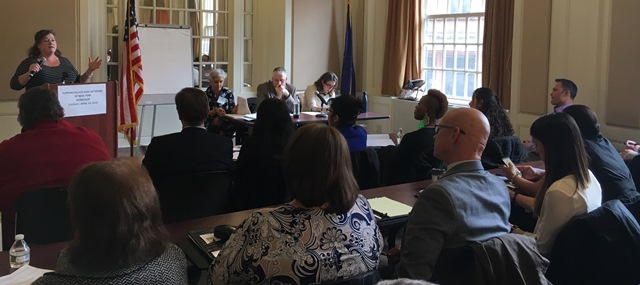
The Network hosted two panel discussions last week on the Empire State Supportive Housing Initiative (ESSHI) in advance of this year’s Request for Proposals (RFP),scheduled to be released imminently. The workshops, held in Albany and Buffalo, highlighted the ESSHI process including what what’s new in the upcoming RFP, how to access capital funding through both OTDA HHAP (Homeless Housing and Assistance Program), and HCR (Homes and Community Renewal). A robust Q&A followed with the audience covering topics such as NIMBY and siting issues, pre-development funding and clarifications on changes around the Medicaid Redesign Team (MRT) population.
The panels, moderated by the Network’s Executive Director, Laura Mascuch, were comprised of representatives from three state agencies: the Office of Mental Health (Moira Tashjian, Associate Commissioner and Chair of the ESSHI Interagency Workgroup), Office of Temporary and Disability Assistance (Rick Umholtz, Director for the Bureau of Housing & Support Services) and Homes and Community Renewal (Leora Jontef, VP of Multifamily Finance-New Construction & Sean Fitzgerald, Assistant Commissioner). In the audience were many of the state agencies also involved in the ESSHI Interagency Workgroup including NYS Office of Alcoholism and Substance Abuse Services (OASAS), NYS Office of Children and Family Services (OCFS) and NYS Office for the Prevention of Domestic Violence (OPDV). Over 150 people attended the events including a mix of nonprofit members, developers, bankers and syndicators.
Several clarifications were discussed. The new RFP will treat the Medicaid Redesign Team (MRT) category differently. Projects serving mental health, substance use disorders, HIV/AIDS, and other Department of Health subpopulations that include 30 or more ESSHI units will be required to dedicate at least 25% of those supportive units to high Medicaid users.
The panelists also clarified that ESSHI will grant extensions beyond the 12 month conditional award period for projects that have demonstrated they are further along in the development process, but they also stressed that there is no penalty for re-applying annually.
Attendees were encouraged to talk to both OTDA and HCR about possible projects early on in the process. Both OMH (Office of Mental Health) and OASAS, have predevelopment funding available that can be accessed once a conditional award is issued.
The Network wishes to thank our hosts for these events, NYS Homes and Community Renewal in Albany and Evergreen Health Services in Buffalo. Both workshops were followed by networking mixers that were robustly attended. We would also like to acknowledge and thank our funders, the Oak Foundation, the van Ameringen Foundation, Robin Hood, New York Community Trust, JPMorgan Chase, Deutsche Bank and Capital One for their generous support of the Network’s Getting to 35K Capacity Building Initiative.
DePaul Opens Beautiful Joseph L. Allen Apartments in Schenectady
Nov.21.2017
 Celebrating the opening of Joseph L. Allen Apartments with Joseph L. Allen’s daughter Lakeia Allen-Bowman; his grandson, Raymond Joseph Allen-Bowman; Schenectady Community Action Program Executive Director Debra Schimpf; Schenectady City Councilwoman Marion Porterfield; Vice Chair of the County Legislature Karen Johnson; Associate Commissioner for the Adult Community Care Group within the Division of Adult Services at the New York State Office of Mental Health Moira Tashjian; Senator James Tedisco; New York State Homes and Community Renewal Commissioner RuthAnne Visnauskas; DePaul President Mark Fuller; and Assemblyman Angelo Santabarbara.
Celebrating the opening of Joseph L. Allen Apartments with Joseph L. Allen’s daughter Lakeia Allen-Bowman; his grandson, Raymond Joseph Allen-Bowman; Schenectady Community Action Program Executive Director Debra Schimpf; Schenectady City Councilwoman Marion Porterfield; Vice Chair of the County Legislature Karen Johnson; Associate Commissioner for the Adult Community Care Group within the Division of Adult Services at the New York State Office of Mental Health Moira Tashjian; Senator James Tedisco; New York State Homes and Community Renewal Commissioner RuthAnne Visnauskas; DePaul President Mark Fuller; and Assemblyman Angelo Santabarbara.
The opening of DePaul’s Joseph L. Allen Apartments October 5th was an especially heart-warming event: in addition to local and state luminaries, the family of Mr. Allen, Schenectady’s first African-American councilman, was on hand. “He would be proud,” said his daughter Lakeia Allen Bowman of having the beautiful new Hamilton Hill residence named after him. “He would be humbled, and he would shed a few tears.”
Lakeia’s young son Raymond added: “Every time I pass the building, it reminds me of how great my grandpa was.”
The striking apartments - with gray and orange exterior accents - will provide homes to 51 families and individuals, with half the apartments set-aside for families and individuals struggling with mental illness and the other half providing homes to low-income families and individuals from the community.
Services are provided by Schenectady Community Action Program and funded by the Office of Mental Health (OMH). Onsite services include linkage to medical, clinical, vocational, educational, and recreational services
The environmentally-friendly apartment complex features a large community room with a full kitchen, a computer lab, a landscaped back garden, and free Wi-Fi. Throughout the building hang photos of local landmarks including City Hall, Veterans’ Park and Jerry Burrell Park.
Welcoming those assembled, DePaul President Mark Fuller said “We are so proud to be part of the revitalization of the Hamilton Hill neighborhood community and to provide homes for people in need.”
State Senator Jim Tedisco and County Legislator Karen Johnson, who served on the City Council with Allen, remarked that the development is a fitting tribute to Councilmember Allen who worked so hard to represent the people of Hamilton Hill.
HCR Commissioner RuthAnne Visnauskas told participants, “This nearly $18 million development enhances the lives of 51 households, strengthens the neighborhood and advances Schenectady’s vibrant revitalization drive.”
Other dignitaries at the event included Assemblyman Phil Steck, Assemblyman Angelo Santabarbara, City Councilwoman Marion Porterfield, and OMH’s Moira Tashjian.
Funding for the Joseph L. Allen Apartments came from NYS Housing Finance Agency, NYS Homes and Community Renewal, NYS Office of Mental Health, JPMorgan Chase, and the Housing Trust Fund Corporation acting by and through the Governor’s Office of Storm Recovery (GOSR). The syndicator was Red Stone Equity Partners, LLC. The architect was SWBR Architects and the contractor was Christa Construction.
Joint Venture Panel and ESSHI State Partners Panel in Rochester
Oct.25.2017
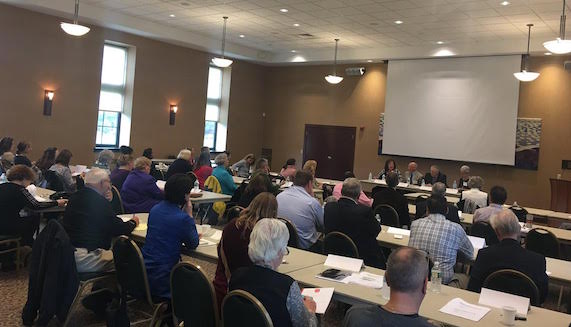
Network members and panelists at our Rochester Capacity Building Initiative events.
On October 12th, the Network convened partners in Rochester for two events focused on meeting the ambitious new statewide supportive housing development goals.
In the morning, representatives from twenty of our nonprofit members participated in a workshop titled Joint Ventures: What’s on the Table. Expert panelists included Kevin Hoffman of Richman Housing Resources, Karen Sherman of ShermanLaw, Michael Claisse of Bank of America, and Monica McCullough of MM Development Advisors. Attendees learned about the basics of Low Income Housing Tax Credit development, risks and rewards of tax credit projects, and what questions to ask when negotiating a joint venture development agreement. Whether they were new to development or had participated in dozens of deals, attendees walked away with a deeper understanding of how to approach a joint venture agreement and how to arrive at a deal that works best for the needs of their organizations. The Network looks forward to more programming on joint ventures as we strive to meet the development goals of the Empire State Supportive Housing Initiative (ESSHI).
Additional members from banks, tax credit syndicators, and for-profit developers joined us for a packed afternoon panel on ESSHI. Moderated by the Network’s Laura Mascuch, the panel featured Moira Tashjian of the NYS Office of Mental Health, Richard Umholtz of the NYS Office of Temporary and Disability Assistance, and Leonard Skrill of NYS Homes and Community Renewal. Panelists reflected on the past year of ESSHI and answered questions about the program’s implementation moving forward. According to the panelists, there were 182 applications in year two: 169 proposals with a total of 5,453 units received conditional awards.
Participants shared a great deal of information about the evolution of the initiative and imparted important information about conditional and permanent awards. To move from conditional to permanent award status,, a project must have all of its capital financing in place. Additionally, although the number of units in the project can change as the project moves forward, neither the population nor location may change from the conditional award. If groups are not 100% sure about their site location, it would be more prudent to not list the site. We are deeply grateful to Providence Housing Development Corporation for hosting this day in their beautiful Bishop Hickey Conference Center and to our generous panelists.
Check for upcoming events related to our Capacity Building Initiative here.
The Network’s Getting to 35K Initiative
Sep.25.2017
The Network's recent panel on the Empire State Supportive Housing Initiative (ESSHI).
Ever since last year, when the state and city committed to create 35,000 new units of supportive housing in two separate initiatives over the next fifteen years, the Network has focused on supporting our community in meeting this unprecedented opportunity. 27,500 of these units will be single-site. The state’s commitment of 20,000 of these units – the Empire State Supportive Housing Initiative (ESSHI) – will be developed through an annual statewide RFP process, while New York City’s 7,500 single-site units – part of NYC 15/15 – will be developed through an open, rolling RFP. The total number of units is three times that of any previous commitment.
The Network has embarked on a multi-year Getting to 35K Initiative for our nonprofit community. Last winter, we surveyed members to gauge their interest in developing supportive housing and to identify any impediments to the process. The results of this survey pointed us towards the types of trainings, convenings, and connections our nonprofit members needed to move forward.
In the first eight months of 2017, we convened our state partners for an ESSHI question and answer session which was attended by 100 members of our community. In February, we piloted a small, hands-on training on how to structure a joint venture with representatives from ShermanLaw, Bank of America, and Richman Housing Resources. Throughout the spring, we presented at various forums to help faith-based organizations partner with affordable and supportive housing developers, including a gathering we hosted with the Mayor’s Center for Faith and Community Partnerships. Eight of our annual conference workshops were aimed at helping the supportive housing community implement NYC 15/15 and ESSHI. And in July, we held our first Joint Venture ‘mixer’ – bringing together for-profit developers and nonprofits interested in partnering to develop supportive housing…in a bar!
Over the next several months, we will be holding a number of events across the state on topics including financing a tax credit deal, joint ventures, and HCR’s unified funding process. While we will be sending out specific invitations to each of these events, we wanted to keep you abreast of what we’re planning to offer.
We would love to hear your thoughts on what else the Network could do to help us all meet our collective vision: ending chronic homelessness in New York State through the creation of sufficient supportive housing.
The Network would like to thank our funders for the Getting to 35K Initiative, without their support this work would not be possible: Bank of America, Capital One, Deutsche Bank, New York Community Trust, the Oak Foundation, Robin Hood, JP Morgan Chase, and the van Ameringen Foundation.
HCR Releases Unified Funding Round Request for Proposals
Sep.25.2017
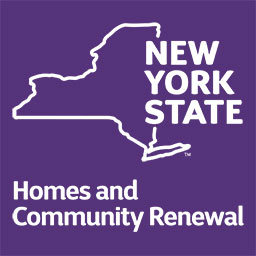 The competitive round of funding that includes 9% Low Income Housing Tax Credits (LIHTC) has been released. This is a major source of funds to develop supportive housing to meet New York State’s commitment to build 6,000 units of supportive housing over five years. That commitment is demonstrated by an increase in the supportive housing set aside for LIHTC, from $4 million to $5 million out of an estimated total of $28 million.
The competitive round of funding that includes 9% Low Income Housing Tax Credits (LIHTC) has been released. This is a major source of funds to develop supportive housing to meet New York State’s commitment to build 6,000 units of supportive housing over five years. That commitment is demonstrated by an increase in the supportive housing set aside for LIHTC, from $4 million to $5 million out of an estimated total of $28 million.
Other capital resources are available through the Unified Funding Round, including:
- Supportive Housing Opportunity Program (SHOP) - $35 million
- Housing Trust Fund (HTF) - $65.2 million
- NYS HOME Program - $7 million
- Rural and Urban Community Investment Fund (CIF) - $44.9 million
- Middle Income Housing Program (MIHP) - $16 million
- Homes for Working Families (HWF) - $4 million
- Public Housing Preservation Program (PHP) - $10 million
- Multifamily Preservation Program (MPP) - $15 million
- New York State Low Income Housing Tax Credit (SLIHC) – $4 million
There are three separate deadlines for the application, including one specific to shovel-ready supportive housing projects:
- Early Award Projects – by 5:00 PM, October 5, 2017
- Early Round Empire State Supportive Housing Projects (ESSHI) – by 5:00 PM, November 7, 2017
- Other capital applications – by 5:00 PM, December 5, 2017
Supportive housing projects not ready for the early round may apply before the regular deadline of December 5, 2017.
To read the full RFP and access other resources on HCR’s website please click here. Information is also available on the Network’s website here.
Prior to the applicable application deadlines, prospective applicants may submit questions to UnifiedFunding@nyshcr.org. Answers to questions submitted by email will be posted on the UF 2017 webpage.
For Network Members, those with ESSHI conditional awards who are new to this funding opportunity, please contact Steve Piasecki at spiasecki@shnny.org with questions or for additional resources.
Medicaid Redesign Team Supportive Housing Program
Sep.20.2017
 Panelists address the crowd at the presentation of the Medicaid Redesign Team Supportive Housing Program evaluations.
Panelists address the crowd at the presentation of the Medicaid Redesign Team Supportive Housing Program evaluations.
Some 70 representatives from a broad spectrum of health and housing organizations gathered at the offices of Robin Hood September 12th for a presentation on first year evaluations of the Medicaid Redesign Team Supportive Housing Program by representatives of the Department of Health (DOH) and SUNY Albany.
Welcomed by Robin Hood’s Managing Director for Health programs, Sarah Oltmans, the Network’s Laura Mascuch then framed the morning’s focus and introduced the presenters. She also summarized the Evaluation’s overall findings: that the programs reduced inpatient days by 40%; reduced emergency department visits by 26%; reduced rehab admissions by 44% and inpatient psych admissions by 27%; and reduced overall Medicaid spend by 15%.
DOH Deputy Medicaid Director Liz Misa kicked off the presentation by giving an overview of the MRT program, by far the largest investment in housing by any state health agency in the country. To date the program has invested $641 million over seven years; served 11,000 high need Medicaid recipients, developed 19 rental subsidy and supportive service programs statewide, added 1,482 units to the state’s supportive housing inventory and prioritized placements in single-site residences for the most vulnerable Medicaid recipients. Ms. Misa then showed a brief film created by BronxWorks in which tenants of their Health Home Supportive Housing Pilot Program described the impact of having stable housing. That program has produced a 46% reduction for the first seven participants for whom they have data, according to the Bronx Health and Housing Consortium.
The research team from SUNY Albany then took over, unpacking cost and utilization data from the tenants of 11 MRT housing-related programs. Dr. Lauren Polvere led off, describing the tenants in terms of their demographics, ethnicity and chronic conditions. Dr. Sandra McGinnis and Dr. Diane Dewar took attendees through the utilization and cost reports, paying special attention to two of the supportive housing programs that had the most robust outcomes in cost and utilization – scattered-site programs for high-need Medicaid recipients run by the Office of Alcohol and Substance Abuse Services (OASAS) and the Office of Mental Health.
Representatives from city and state government, MRT supportive housing, Managed Care Organizations, foundations and health care professionals then participated in an hour-long discussion of the results and proposed next steps. Presenters told attendees that additional studies are being conducted to inform effective targeting of participants for the MRT units as well as to better understand unmet need. Ms. Misa left open the possibility of expansion or creation of new programs depending on budget discussions.
We thank the presenters as well as our Robin Hood hosts for the opportunity to discuss this groundbreaking work.
Kenyon Craig, Housing Visions’ CEO, steps down after 27 years
Aug.02.2017
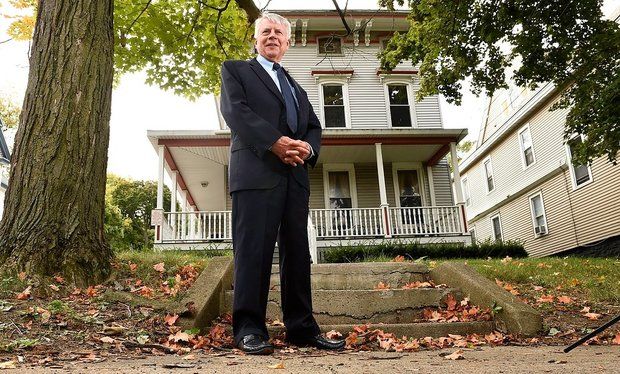
Kenyon Craig.
In 1994, I returned to my home town of Syracuse to help Central New York Services open the first upstate supportive housing residence. I was fortunate to have Housing Visions (HV) as a next door neighbor. HV had been buying and rehabbing multiple properties in the area, using the fairly new Low Income Housing Tax Credit to create neighborhood change. That’s how I came to know the brilliant work of Kenyon Craig, HV’s founder. I was fortunate to see our neighborhood change around us as these investments helped make run-down Greek Revival, Queen Anne and Arts and Crafts homes new again. Over time, the boarded-up, dilapidated and often vacant homes of East Genesee Street have been replaced by well-maintained homes and rising property values: so much so that HV can no longer afford to develop there (not that they need to)!has been transformed.
Housing Visions has continued to grow and innovate since those days, creating extraordinary residences like VanKeuren Square for homeless veterans or replacing an old public housing tower with beautiful garden apartments in another supportive housing development, Maple Heights.
After 27 years of success that began in a church basement in that same neighborhood Ken recently announced his retirement. Over the years, Ken and HV developed about 1,600 units of affordable and supportive housing across New York, from Niagara Falls to Albany, from Oswego to the Pennsylvania border. He showed me the amazing way affordable housing development can lead to community renewal.
I wish you well in retirement, Ken!
Utilization Evaluations of the Medicaid Redesign Team (MRT) Supportive Housing Initiative
Jul.24.2017

The New York State Department of Health recently released SUNY Research Foundation’s cost evaluation and utilization evaluation of the Medicaid Redesign Team (MRT) Supportive Housing initiative. The two reports are the first installment in a three-year study.
The Community Builders Opens a Beautiful New Affordable/Supportive Housing Residence
Jun.27.2017

Cutting the ribbon at Tapestry on the Hudson.
On June 6th, The Community Builders and Unity House held a ribbon cutting for Tapestry on the Hudson (“Tapestry”), a new affordable and supportive housing residence in Troy. The residence, a former collar factory, was converted into 67 apartments, including 19 supportive units primarily for families. Troy is known as the Collar City having been the one-time center of manufacturing for celluloid collars at the turn of the 20th Century.
Continue Reading …Governor Signs Legislation for $1 Billion to Build 6,000 Units of Supportive Housing
May.19.2017
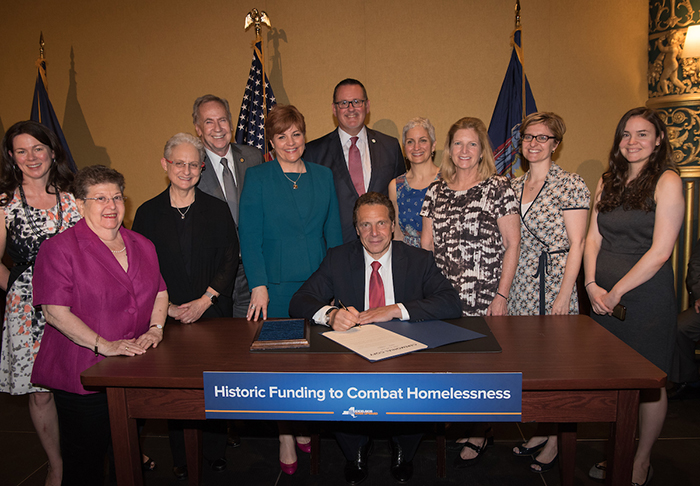
Governor Andrew Cuomo with advocates at the bill signing.
Yesterday Governor Andrew Cuomo, accompanied by Speaker of the New York State Assembly Carl Heastie, Building and Construction Trades Council of Greater New York President Gary LaBarbera, and Breaking Ground's President and CEO Brenda Rosen, signed a historic bill announcing $2.5 billion for the creation and preservation of 6,000 new units of supportive housing and over 110,000 units of affordable housing over the next five years, in the ballroom of Breaking Ground's The Prince George. This capital funding is the first installment in the Governor's unprecedented commitment to build 20,000 new units of supportive housing over the next fifteen years.
Continue Reading …
